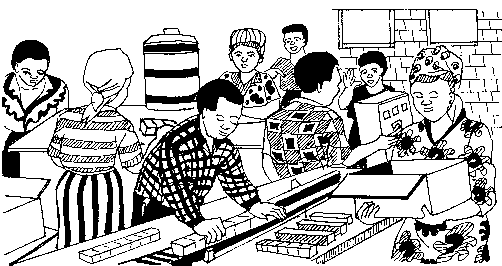Tweet
Translations:
'العربية / al-ʿarabīyah
Bahasa Indonesia
বাংলা / Baṅla
Български език
Català
中文 / Zhōngwén
Deutsch
English
Español
Filipino/Tagalog
Français
Galego
Ελληνικά / Elliniká
हिन्दी / hindī
Italiano
日本語 / Nihongo
Kiswahili
Português
Română
Русский
Српски / Srpski
తెలుగు /Telugu
ไทย / Thai
Tiếng Việt
Türkçe
اردو / Urdu
Èdè Yorùbá
Other formats:
Other Pages:
Modules
Site Map
Key Words
Contact
Utility Documents
Useful Links
SUSTAINING THE INTERVENTION
Beyond a Single Mobilizer
by Phil Bartle, PhD
Module Introduction (hub)
Documents Included in this Sustaining Module
- Sustaining the Cycle, one community project is only the beginning
- Community Leadership & Internal Mobilization, sustaining by auto mobilization
- Lessons Learned and Awareness of Possibilities, to carry on
- Key words for the Sustaining the Intervention Module.
If you visit a weights lifting gym only once, you will not build your muscles
If you look again at the key words and basic concepts mentioned in Chapter One as important for you to know, you will find the word "sustainability." (It is not found in most dictionaries). How can something we put in place be made sustainable so that it stays in place?
For the community, whose goal was improved health, and objective was to construct a latrine, its concern with sustainability is in questions like, "How do we ensure the latrine will be kept clean, repaired, maintained and used?"
The answer is in ensuring community responsibility (by community participation in decision making and control) from the beginning of the project.
For you, who has put in place a social process of social change, strengthening the community, your concern with sustainability is more in questions like, "How will the community continue to take charge of its improvements, making her assessments, choosing new priorities, seeking new resources, undertaking new actions, increasing its self reliance?"
The goals of you and of the community are different but complementary. You want your intervention to be sustained. The question of sustainability is answered in how you go about your mobilization.
Your goal is not a once-and-for-all latrine, school, clinic or water supply. It is sustainable development.
This module looks at how you can make your work sustainable. Part of the answer lies in repeating the mobilization cycle itself; part of it lies in identifying and training mobilizers from within the target community.
––»«––
Productive Activity; Soap Making:
 |